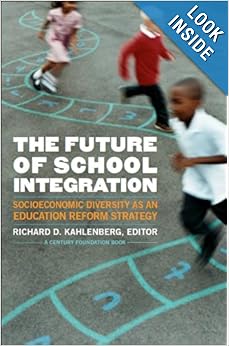The NYTimes has a piece on the modest resurgence of magnet schools, which are public schools of choice that highlight a portion of the curriculum that is attractive to certain children and parents. They are great alternatives to the corporate charter chains staffed with non-teachers and managed by non-educators.
Unless a conscious effort to reduce segregation is included in their magnet planning, however, the same kinds of cognitive and socioeconomic apartheid can result. That is why school systems should view magnet schools as a way to offer parents choice, of course, but to primarily function to reduce socioeconomic segregation by instituting parameters that cap schools poverty maximums within a district, regardless of the kind of school.
A clip from the NYTimes:
Unless a conscious effort to reduce segregation is included in their magnet planning, however, the same kinds of cognitive and socioeconomic apartheid can result. That is why school systems should view magnet schools as a way to offer parents choice, of course, but to primarily function to reduce socioeconomic segregation by instituting parameters that cap schools poverty maximums within a district, regardless of the kind of school.
A clip from the NYTimes:
MIAMI — Nearly five decades ago, as racial tension raged in cities, magnet schools were introduced here and elsewhere as an alternative to court-ordered busing in the hope that specialized theme schools would slow white flight and offer options to racial minorities zoned for low-performing schools.
Magnet schools never quite delivered on that desegregation promise, and in the past couple of decades they have largely fallen off the radar. But in this multiracial city — and, increasingly, in other urban districts including Chicago, Dallas, Denver, Los Angeles, Newark and Washington — public school leaders are refocusing on the idea as traditional public schools come under increasing pressure from charter schools and vouchers for private schools.
The number of children in Miami-Dade County attending magnet programs — which admit students from anywhere in the district and focus on themes like art, law or technology — has grown by 35 percent in the past four years. These children now account for about one in six students in the district. . . . .

No comments:
Post a Comment